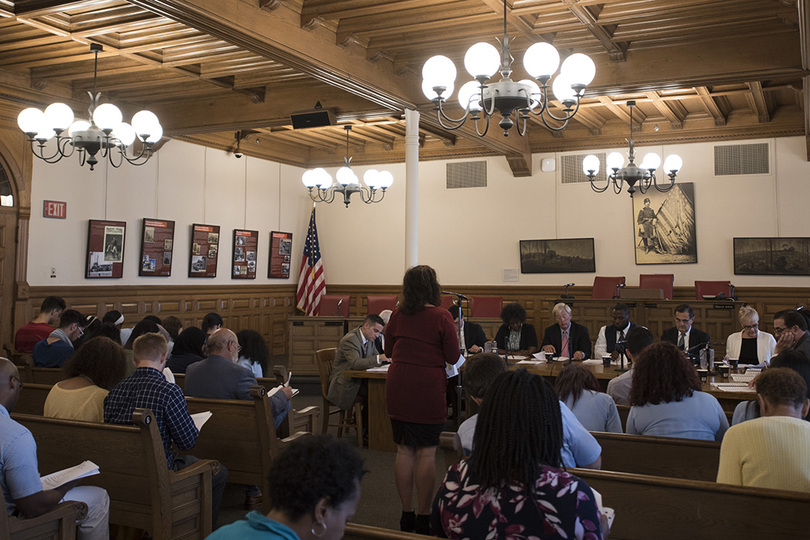Common Councilor introduces deer legislation in hopes of supporting state Senate bill

Deer culling involves hunting deer to cut down on overpopulated herds. Phil Bryant | Staff Photographer
Syracuse Common Councilors on Wednesday discussed how supporting a New York State Senate bill could affect the city’s ability to implement a “culling” program amid concerns of deer overpopulation on Syracuse’s Eastside.
Next Monday, at the council’s regular meeting, officials will vote on whether they want to support a bill proposed by area legislators Sens. John DeFrancisco, R-N.Y., and David Valesky, D-N.Y., to amend a section of the environmental conservation law to make sure hunters can shoot and kill deer — often called culling — within 300 feet of public roads and make it easier for municipalities to start deer management programs.
Councilor Nader Maroun, who lives off Euclid Avenue, introduced the resolution of support to officials on Wednesday. Maroun represents District 5, which includes portions of Syracuse University.
“We all know deer have no boundaries,” Maroun said. In reality, deer living on the Eastside, particularly, go back-and-forth between the town of DeWitt and city of Syracuse, he said.
Maroun said an ordinance the city recently voted into law prohibits people from shooting deer within 1,000 feet of properties including schools, daycare centers and parks.
In a separate voting matter on Monday, councilors will also consider whether they want to amend that ordinance so the number of feet around public properties where hunters are prohibited from shooting deer is “open-ended.”
“We don’t know what the (Department of Environmental Conservation) is ultimately going to end up with,” said Maroun, referring to hunter distance requirements, because DeFrancisco and Valesky’s bill could change culling regulations. The city wants to make sure the code can be changed if the state law is updated, he said.
The town of DeWitt previously voted to allow federal sharpshooters to kill deer in their municipality.
In 2014, the Syracuse-Onondaga County Urban Deer Task Force compiled a study on deer living in Eastside neighborhoods. A study published by the task force found that high concentrations of deer lived in secluded areas such as Drumlins Country Club and St. Mary’s Cemetery.
Lyme disease, a dangerous bacterial infection, is transmitted by deer and mice. To be effective, Syracuse would hope to cull deer in DeWitt, where there’s open space for baiting, Maroun said.
A team of professors and researchers at the State University of New York College of Environmental Science and Forestry, earlier this year, received $150,000 in funds from a state grant to study area deer populations.
State Assemblywoman Pamela Hunter, D-N.Y., who represents portions of the Syracuse area, helped secure those funds as part of the 2016-17 state budget.
“Deer are basically the single greatest threat to biodiversity in the northeastern United States — period,” said Donald Leopold, chair of SUNY-ESF’s environmental and forest biology department, earlier this year. “A lot of places that once had lots of native orchids, lots of lilies, lots of trilliums — all those plants are wiped out, and they’re not coming back.”




